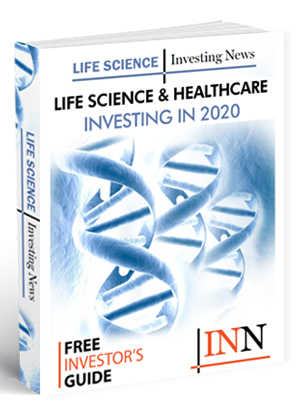The spread of the coronavirus has taken a significant toll to the global economies and the investment landscape, but how has one of the safest investment vehicles performed since the world was thrown upside down?
Exchange-traded funds (ETFs) serve as an index pool of stocks for investors to buy into and secure exposure into a collection of companies in specific sectors.
Rather than pick individual names, investors can gain entries into various segments with either the assurance of managed assets by way of an active management style, or an index with rules tracking the companies in question.
The Investing News Network (INN) examines the performance of some of the biggest ETFs available for various industries since the outbreak of COVID-19 in North America.
The following ETFs all have a minimum value of all assets worth US$20 million. All percentage and price changes have been marked as of July 31.
While there is no specific date for the start of the coronavirus’ impact on the global markets, we will examine the year-to-date performance of the ETFs and note that March 13 was when US President Donald Trump first declared a national emergency in the US.
1. SPDR S&P 500 (ARCA:SPY)
Often referred to as the cornerstone for ETFs tracking the biggest names in the public market. SPY also serves as an indicator for general performance in the markets and the activity of the economy at large.
The index tracks the 500 largest corporations in the US stock markets and its two sectors of highest exposure are technology and healthcare, respectively.
While over a year-to-date stance, SPY is up 0.51 percent and back in track with the prices it saw earlier in the year, the index dipped severely as the risk of the virus became apparent.
March was the lowest point for the fund as it highlighted the panic surrounding the impact of the virus. On March 23, the index hit a low price of US$222.95, representing a 31.37 percent decline from the start of the year.
2. iShares Core S&P 500 ETF (ARCA:IVV)
Another large-cap ETF of US names, which saw a similar severe decline around the end of February and started to pick up by April.
Similarly, IVV has tech names as its largest holdings including companies like Apple (NASDAQ:AAPL), Microsoft (NASDAQ:MSFT) and Amazon (NASDAQ:AMZN).
At its lowest point this year, March 23 also, IVV hit a price of US$244.65 meaning a drop of 31.16 percent in value.
Despite all the turbulence, so far in 2020 the ETF has managed to bounce back and now have a 0.46 increase for the year so far.
3. SPDR S&P Biotech ETF (ARCA:XBI)
This ETF covers the entire large-cap biotech space by way of tracking the S&P Biotechnology Select Industry Index. These bigger medical companies offer exposure to new medicine developments either by pure pharmaceutical items or newer treatments discovered.
Often, large-cap biotech firms will focus on rare diseases with little to no known treatments available.
The ETF saw its lowest point in March as biotech public firms were affected by the increased uncertainty and volatility in the stock market. As such, XBI was down 30.34 percent to a price point of US$69.95 on March 16.
Over a year-to-date period the fund has actually recovered greatly, even seeing higher prices from before the pandemic took over in the US.
At the end of July, the fund was up 15.47 percent, representing gains of US$14.65 per share, for a closing price of US$109.33.
Various biotech names have been closely attached to the development of an actual treatment for the virus. This has led to a boost in confidence for the biotech sector thanks to the potential eventual sale of a proven and effective treatment option against the coronavirus.
4. SPDR Gold Trust (ARCA:GLD)
In terms of the booming gold industry, GLD offers investors an easy entry-point to the gold market. So far this year the entire economic downturn has been evident except for gold – a sector that keeps raising with the year.
According to the fund managers, GLD is designed “to lower many of the barriers, such as access, custody and transaction costs, that had prevented some investors from investing in gold.”
Over a year-to-date period, this ETF is actually significantly up by 28.82 percent, resulting in a price of US$185.43.
While similarly to the rest of the ETFs in this list, GLD saw a dip around March the fund quickly recovered and went on to surpass its highest price point for the year.
5. iShares Gold Trust (ARCA:IAU)
iShares’ gold ETF wants to offer investors a fund reflecting the price for the commodity. The ETF lists some benefits of investment in its fact sheet as offering day-to-day exposure on the movement associated with the price of gold bullion.
Similarly to its counterpart, GLD, IAU has actually experienced a booming 2020. After recovering from the March dip, the fund went on to reach a price point of US$18.86, which indicates a value uptick of 29.09 percent for the year.
These ETFs have bounced back thanks to the incremental performance for the price of gold.
“I’m long gold because I really think we are now, again, in a very beautiful long-term secular gold bull market,” mining entrepreneur Ross Beaty recently told INN.
INN has heard from a collection of experts on the impact the coronavirus spread has had on gold and its price. Click here to view the playlist.
6. Global X Lithium & Battery Tech ETF (ARCA:LIT)
This lithium centred ETF offers investors exposure into all aspects of the lithium production cycle. The fund uses the Solactive Global Lithium Index as its compass for the price and yield performance.
At the end of July, the fund had actually seen a solid increase from March. Since March 2, LIT was up 22.39 percent in value, resulting in a closing price on July 31 of US$35.91.
Early on at the outset of the virus spreading it wasn’t easy to project how lithium would be impacted. Alex Laugharne, principal consultant at CRU Group told INN, he didn’t see the virus driving up the price for lithium. One element of lithium directly impacted by coronavirus was the market for electric vehicles reliant on lithium, according to Forbes.
Don’t forget to follow us @INN_LifeScience for real-time news updates.
Securities Disclosure: I, Bryan Mc Govern, hold no direct investment interest in any company mentioned in this article.
Editorial Disclosure: The Investing News Network does not guarantee the accuracy or thoroughness of the information reported in the interviews it conducts. The opinions expressed in these interviews do not reflect the opinions of the Investing News Network and do not constitute investment advice. All readers are encouraged to perform their own due diligence.




